#Euthyneura
Photo

Variable Neon Slug
#variable neon slug#Nembrotha kubaryana#Gastropoda#Heterobranchia#Euthyneura#Nudipleura#Nudibranchia#Euctenidiacea#Doridacea#Polyceroidea#Polyceridae#Nembrothinae#Nembrotha#nudibranch#sea slug#dorid nudibranch#upl
707 notes
·
View notes
Photo


Macgillivray's Treesnail.
Sadly, I can’t find much information on this species,
but you can see a juvenile here
Rhynchotrochus macgillivrayi
18/05/22
#Rhynchotrochus macgillivrayi#Rhynchotrochus#Macgillivray's Treesnail#Mollusca#Hadrinae#Camaenidae#Helicoidea#Helicoidei#Helicina#Stylommatophora#Eupulmonata#Tectipleura#Euthyneura#Heterobranchia#Gastropoda#land snails#air-breathing snails#snails#molluscs#mollusks#bugblr#bugs#bug#bugs tw#insects#insectblr#insects tw#entomology#nature#nature photography
34 notes
·
View notes
Photo

Kaputar slug (Triboniophorus sp. nov. 'Kaputar')
Photo by n.weigner
#kaputar slug#leaf veined slug#triboniophorus sp. nov. 'kaputar'#triboniophorus#aneitinae#athoracophoridae#athoracophoroidea#elasmognatha#succineoidei#stylommatophora#eupulmonata#panpulmonata#pulmonata#tectipleura#euthyneura#heterobranchia#gastropoda#mollusca#lophotrochozoa#beautiful species
20K notes
·
View notes
Photo

Fluorescent pink slug, unique to Australian mountaintop, survives bushfires | The Guardian
A fluorescent pink slug, found only on a single mountaintop in northern New South Wales, has survived the bushfires that burnt through much of its alpine habitat.
Around 60 of the brightly coloured Mount Kaputar slugs, which can grow to a size longer than a human hand, were spotted by National Parks and Wildlife Service rangers after recent rainfall in Mount Kaputar national park.
The Kaputar fire burnt through the area for more than six weeks from October to December 2019, affecting more than 18,000 hectares of land.
The mountain was formed by a now-extinct volcano, and is home to at least 20 species of snails and slugs found nowhere else in the world. The area has been identified as an endangered ecological community, the first of its kind in Australia.
Some of the fluorescent slugs would have managed to survive the fire because they had “retreated into rock crevices” in the heat, the Australian Museum malacologist Frank Köhler said.
But around 90% of the slug population, which also hibernates in bark and trees, would have been killed in the fire, he said.
Much of the slug’s food sources – fungi, moss and mould – would also have been burnt by the fire, but Köhler said these species should recover relatively quickly.
In coming months the slug might be at risk of being seen more easily in the burnt landscape by hungry birds and mammals, said Köhler, but the bright colour could also act as a warning to dissuade the predators.
#Kaputar Pink Slug#Triboniophorus nov kaputar#Triboniophorus#Athoracophoridae#Athoracophoroidea#Succineoidei#Helicina#Stylommatophora#Eupulmonata#Panpulmonata#Euthyneura#Heterobranchia#Gastropoda#Mollusca#slug#endangered#wildfire#Australia
305 notes
·
View notes
Photo

Powelliphanta traversi traversi (Powell, 1930) by Gabriel Paladino Photography https://flic.kr/p/2kDJ7yq
3 notes
·
View notes
Photo
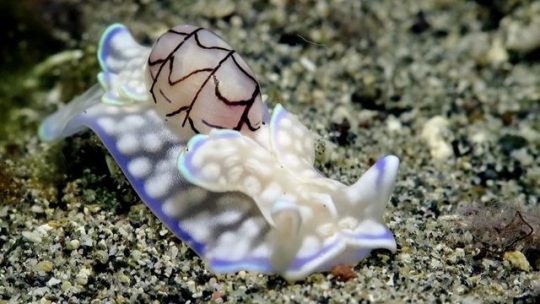
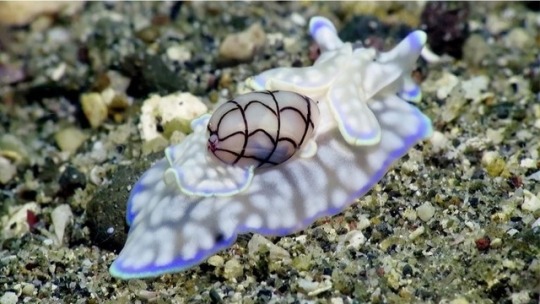
Miniature Melo
Micromelo undatus
Source: Here
#micromelo undatus#micromelo#miniature melo#animal#animalia#mollusc#mollusca#gastropod#gastropoda#heterobranchia#heterobranch#euthyneura#aplustridae#sea snail#bubble snail#snail#nature#wildlife
299 notes
·
View notes
Photo
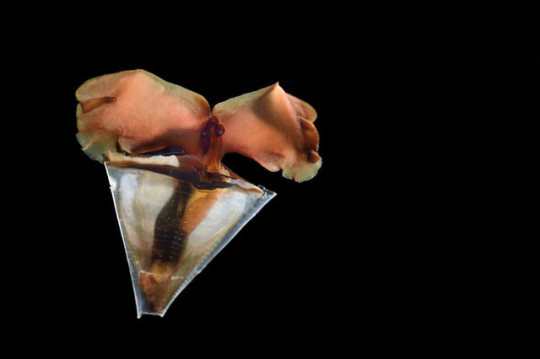
True to its name, the sea butterfly (Clio chaptali)—a member of a family of marine snails—seems to fly through water. Two fleshy “wings” have evolved from the snail’s foot, which allow it to flutter through the water column and passively feed on plankton while remaining protected inside its translucent shell.
Photo: Solvin Zankl
#Animal#Invertebrate#Mollusk#Sea Snail#Sea Butterfly#Lophotrochozoa#Gastropod#Heterobranchia#Euthyneura#Euopisthobranchia#Thecosomata#Cavolinioidea#Cliidae#Clio#Clio chaptali
0 notes
Note
Rabbits are more anxious than horses because they're worried about foxes getting them pregnant
Banana slug is a common name for three North American species of terrestrial slug in the genus Ariolimax. These slugs are often yellow in color and are sometimes spotted with brown, like a ripe (or overripe) banana.Banana slugTwo banana slugs preparing to mateScientific classificationKingdom:AnimaliaPhylum:MolluscaClass:Gastropoda(unranked):clade Heterobranchiaclade Euthyneuraclade Panpulmonataclade Eupulmonataclade Stylommatophorainformal group SigmurethraSuperfamily:ArionoideaFamily:AriolimacidaeSubfamily:AriolimacinaeGenus:AriolimaxMörch, 1859SpeciesAriolimax californicusAriolimax columbianusAriolimax dolichophallusSpeciesEditSpecies within the genus Ariolimax include:Ariolimax californicus J. G. Cooper, 1872 — California banana slug[1]Ariolimax columbianus Gould, 1851 — Pacific banana slug[1]Ariolimax dolichophallus Mead, 1943 — Slender banana slug[1][2][3]DescriptionEditHead and tentacles of a banana slugBanana slugs are often bright yellow (giving rise to the banana sobriquet) although they may also be greenish, brown, tan, or white. The species Ariolimax columbianus sometimes has black spots that are so extensive that the animal looks almost entirely black. Individual slugs will change colors with alterations in food consumption, light exposure, and moisture levels. Color may also indicate whether a slug is healthy or injured or what age it is.[4]The Pacific banana slug is the second-largest species of terrestrial slug in the world, growing up to 25 centimetres (9.8 in) long,[5]and weights of 115 grams (4.1 ounces).[6](The largest slug species is Limax cinereoniger of Europe, which can reach 30 centimetres (12 in) in length.) Banana slugs have an average lifespan of 1-7 years. [7]Banana slugs (like other gastropods and many other mollusks) have a radula, a ribbon-like anatomical structure covered in rows of microscopic teeth; the radula is used for feeding.[8] Individuals can move at 6 1⁄2 inches (17 cm) per minute.[9]Slugs use two pairs of tentacles to sense their environment. The larger, upper pair, termed "eyestalks," are used to detect light or movement. The second, lower pair are used to detect chemicals. The tentacles can retract and extend themselves to avoid damage. If a predator bites off a tentacle, the slug can grow a new one.Banana slugs have a single lung (on the right side) which opens externally via a pneumostome. The pneumostome lung cavity is heavily vascularized to allow gas exchange. Dehydration is a major problem for the mollusk; to combat this, banana slugs excrete a thick coating of mucus around their bodies and can also aestivate. To do so, they secrete a protective layer of mucus and insulate themselves with a layer of soil and leaves. They remain inactive in this state until the environment becomes moist again.This individual Ariolimax columbianus has numerous black spots. The patterning may be so extensive as to make the animal look almost solid black. Banana slugs have a single lung which opens externally via a pneumostome. The placement of the pneumostome on the mantle helps to distinguish the species of Ariolimax.The slime also contains pheromones to attract other slugs for mating. Slugs are simultaneous hermaphrodites, and reproduce by exchanging sperm with their mate. They produce up to 75 translucent eggs, which are laid in a log or on leaves. Slugs mate and lay eggs throughout the year. The adults provide no further care for their eggs beyond finding a suitable hiding spot, and the eggs are abandoned as soon as the clutch is laid.[10]
1 note
·
View note
Photo
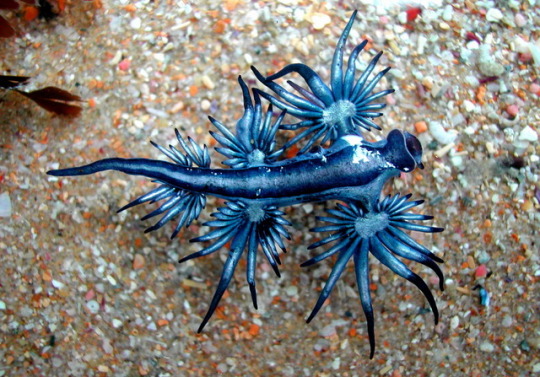
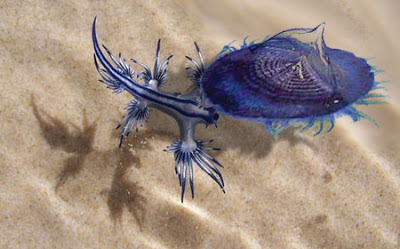

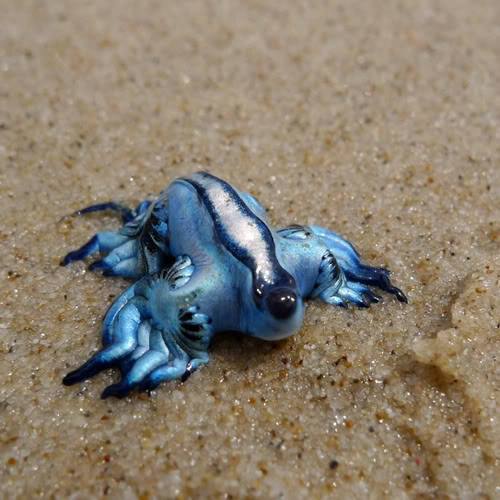
The Glaucus atlanticusis is known as the “sea swallow” or the “blue dragon” and store nematocysts from the jellyfish they feed on, giving them the ability to defend themselves from predators. Sea swallows are actually pelagic, meaning they swim upside down and allow the currents to carry their bodies.
clade Heterobranchia
clade Euthyneura
clade Nudipleura
clade Nudibranchia
clade Dexiarchia
clade Cladobranchia
clade Aeolidida
7 notes
·
View notes
Text
Wee Lil’ Slugs
Part 2 Day 2 of (Half) A Classes Adventure Through the Elkhorn Slough
After exploring the equipment used to make under water scientific discoveries, and admiring the engineering skills that so many have to bring dreams of experiencing these other worlds to life, a trip to go see some of the animals and life that inspire us all to study what we do!
We made our way (slightly late) to a kayaking company down the road of MBARI and got in our bright yellow jackets and life vests. After pairing up and playing a low-level ice breaker with our group we were off! Paddling down in early afternoon, gliding against the low rolling waves of the Elkhorn Slough. Passing the “Bachelor” otter pad and a large grouping of Sea lions wailing from a strip of rock framing the channel of the slough, we paddled along talking about the large beautiful birds and making our way in.
While paddling down, we passed over a patch of Seagrass. The ropes of the thin blades of green floating at the surface of the water just hinting at the immensity of the green forrest underneath. Seagrass provides an important habitat for many creatures in the Elkhorn Slough and there have been major efforts just in the last few years to restore the Seagrass to its original density.
As we paddled gently across the bed, gliding over the top being careful not to rip up the shoots, Dr. Lee spotted a very small and green Phyllaplysia taylori, her eyes like a hawks for invertebrate life. Softly she scooped up the little slug, inspecting the few vertical white lines going from anterior to posterior and the small black dots and lines running laterally. No bigger than roughly 35mm, this little mesograzer helps clean epiphytes off the seagrass, keeping the seagrass growing healthily. “...epiphytes and diatoms that can smother the seagrass, compromising the photosynthetic capacity of the seagrass blades” Mesograzers, like Phyllaplysia taylori, remove the epiphytes and diatoms so that the seagrass can effectively persist and provide for the Elkhorn Slough.
Due to paddling and enjoying the moment, I did not take my phone out to take a picture of the Phyllaplysia taylori we looked at so I have provided a web search picture on one.
Other Good-to-Know facts about the Phyllaplysia taylori *Pictured Below* (Sources are hyperlinked)
-Taxonomy
K: Animalia~P: Mollusca~C: Gastropoda~SubC: Heterobranchia~InfraC: Euthyneura~SubterC: Tectipleura~Order: Aplysiida~SuperF: Aplysioidea~F: Aplysiidae~G: Phyllaplysia~S: Phyllaplysia taylori
-Common Names: Zebra leafslug, Taylor's sea hare, green sea slug
-This species is hermaphroditic
-This is not a nudibranch! Even if it appears like it should be
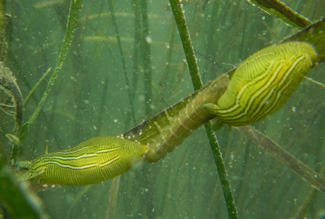
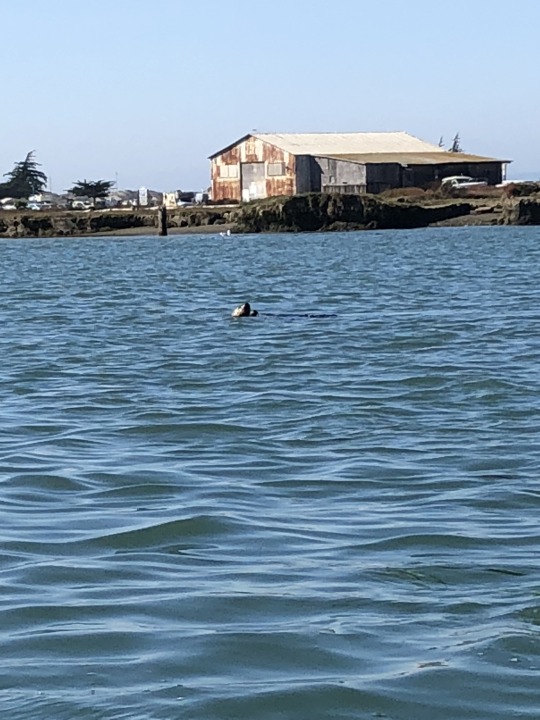
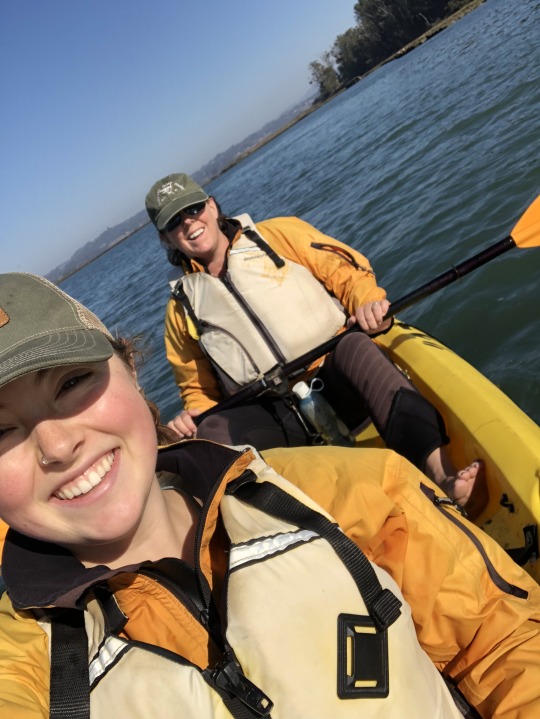
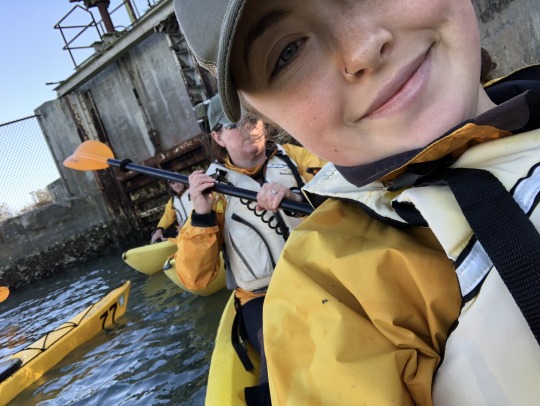
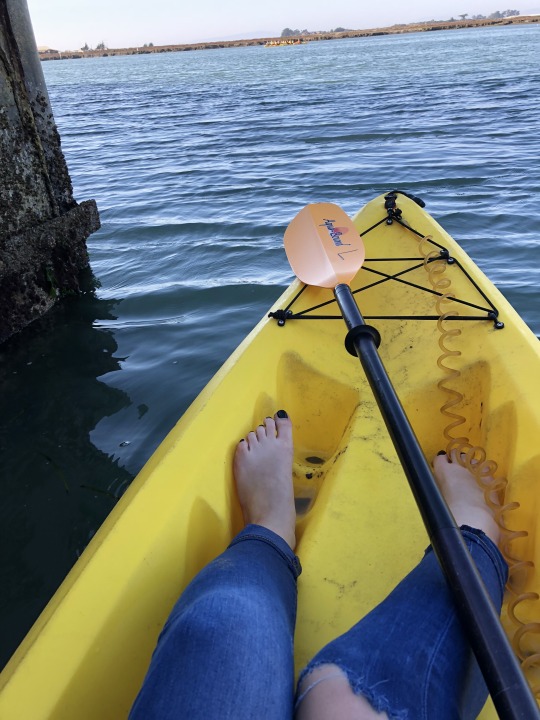

0 notes
Text
Glaucus Atlanticus ( The Blue Dragon from Pokemon!!!)
These sea slugs are pelagic

This organism looks just like a Pokemon character. Glaucus Atlanticus aka Blue Dragon is very beautiful but also life threating. The Blue Dragons grow up to 3 centimeters long. They float at the surface of the water and on their backs for camouflage. Their belly is blue to blend in with the blue water. And their camouflage for their back blends in with the brightness of the surface of the water. Blue Dragons’ taxonomy classification:
Kingdom: Animalia
Phylum: Mollusca
Class: Gastropoda
(unranked):
clade Heterobranchia
clade Euthyneura
clade Nudipleura
clade Nudibranchia
clade Dexiarchia
clade Cladobranchia
clade Aeolidida
Superfamily: Aeolidioidea
Family: Glaucidae
Genus: Glaucus
Species: G. Atlanticus
1 “These sea slugs are pelagic...Glaucus Atlanticus feeds on other pelagic creatures” such as poisonous creatures. The poison doesn’t affect the Blue Dragons. They the poison for their own use. “ They are known to prey on the dangerously venomous Portuguese man o' war (Physalia physalis); the by-the-wind-sailor (Velella velella); the blue button (Porpita porpita); and the violet snail, Janthina janthina.” Blue Dragons have 1 “been recorded from the east and south coasts of South Africa, European waters, the east coast of Australia, and Mozambique.” “[T]hey live in warm temperate climates in the Southern Pacific, and in circumtropical and Lusitanian environments...”
youtube
The wing-like arms/legs are called appendages. Blue Dragons have six appendages. The finger-like branches are called cerata. Their cerata are able to sting, more than likely due to the fact that they eat venomous organisms. 1“Glaucus is a hermaphrodite, having both male and female reproductive organs.” 1“After mating, both animals produce egg strings.”
youtube
1https://en.wikipedia.org/wiki/Glaucus_atlanticus
2http://eol.org/pages/451180/details
0 notes
Photo
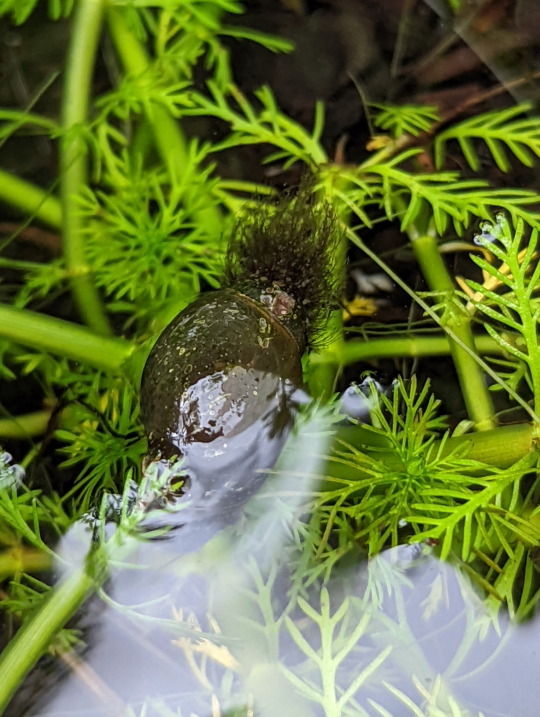
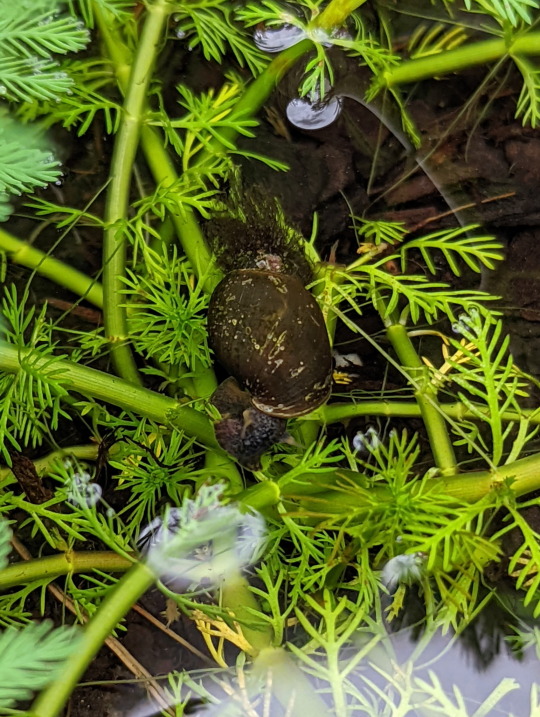
He’s got a bit of algae on his back,
but he’s doing well!
Glyptophysa novaehollandica
23/05/22
#Glyptophysa novaehollandica#Glyptophysa#Miratestinae#Planorbidae#Lymnaeoidea#Hygrophila#Tectipleura#Euthyneura#Heterobranchia#Gastropoda#gastropods#Mollusca#molluscs#mollusks
10 notes
·
View notes
Photo

Carpathian blue slug (Bielzia coerulans)
Photo by Alan Fenn
#carpathian blue slug#blue slug#bielzia coerulans#bielzia#limacinae#limacidae#limacoidea#limacoid clade#sigmurethra#stylommatophora#eupulmonata#panpulmonata#tectipleura#euthyneura#heterobranchia#gastropoda#mollusca#lophotrochozoa
269 notes
·
View notes
Photo

An image taken underwater shows the sea slug Oxynoe kylei here in Tulamben, Bali, Indonesia
Photograph: Oksana Maksymova/Alamy
(via The week in wildlife - in pictures | Environment | The Guardian)
#Oxynoe kylei#Oxynoe#Oxynoidae#Oxynooidea#Sacoglossa#Tectipleura#Euthyneura#Heterobranchia#Gastropoda#Mollusca#sea slug#marine life#Indonesia
11 notes
·
View notes
Photo

Euhadra dixoni (Pilsbry, 1900) by Gabriel Paladino Photography https://flic.kr/p/2iTti5Y
3 notes
·
View notes
Photo
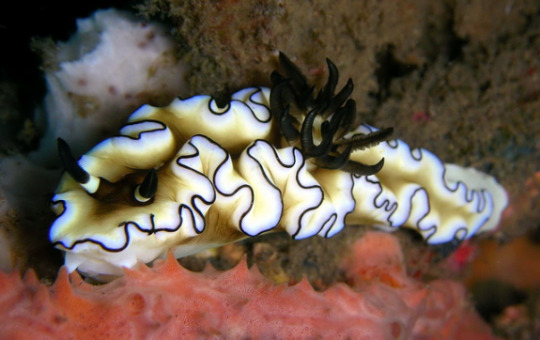
Doriprismatica atromarginata
#doriprismatica atromarginata#doriprismatica#sea slug#nudibranch#gastropod#gastropoda#mollusc#mollusca#invertebrate#heterobranchia#heterobranch#euthyneura#nudibranchia#doridina#dorid nudibranch#dorioidea#marine#aquatic#marine life#ocean life#marine biology#animal#animalia#zoology#wildlife#wildlife biology#nature
190 notes
·
View notes